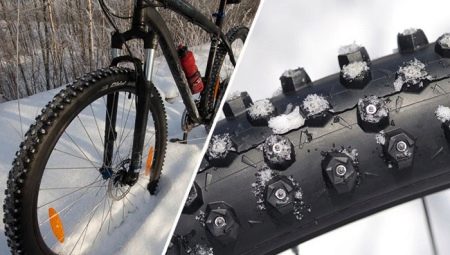The need to choose winter tires for a bicycle arises for both experienced riders and beginners, who for the first time decide to travel on snow porridge or on an icy road. The all-weather operation of two-wheeled vehicles has gained particular popularity with the advent of fat bikes, which allow you to adjust tire pressure to increase patency. But the choice of bicycle tires for the winter is still a serious problem, because the practice of using such a bicycle rubber is not too great. What qualities should tires have that allow them to move freely in snow, sand and salt mixture, dirt and roads covered by snowdrifts?
Studded tires 20–26 and 28–29 inches, as well as other options for winter tires are produced by many well-known brands. Who can be trusted with the safety of your bike, what should you look for when choosing? To understand the issue, it is worth considering all available options in more detail.

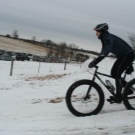


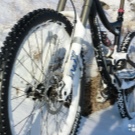
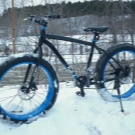
Features
Winter tires for a bicycle differ markedly from their summer counterparts, and the point here is not only seasonal application. Among the important features possessed by studded tires, the following can be distinguished:
- soft rubber - it will be much less rigid than summer, which is associated with the use of rubber compounds that can maintain their properties at low atmospheric temperatures;
- the presence of spikes - additional hooks help to strengthen grip even under icing conditions, ensure a high level of safety while riding on tracks with different characteristics and on the road;
- special tread pattern - it will certainly be deeper, sharper and sharper; winter tires need to cling to the ground as best as possible, rough lamellas do this really effectively;
- increased wear resistance - in many ways, it is also due to the use of special additives that reduce surface abrasion;
- puncture resistance - even when driving on a flat tire, you can not worry that they will get a hole;
- significant weight - this can be a problem, especially on fatbikes, the weight of which is already large, and most of it falls on the wheels;
- increased cost - a set of winter tires for MTB bike of any level will cost quite expensive; especially if you do not save and buy high-quality tires.
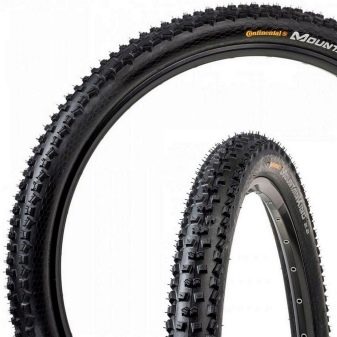
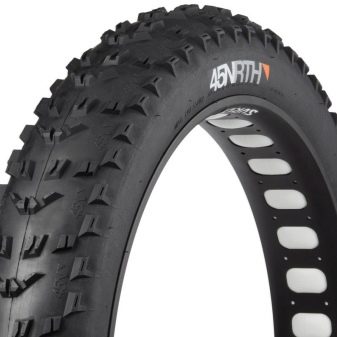
It is worth paying attention to the rubber studs.
In budget models, it is steel, in expensive cases it is often made of stainless materials or aluminum alloys, and the spike itself is formed of tungsten carbide or other metals with increased wear resistance.
The features of winter bicycle tires include the need for break-in. Before the start of the season, their 50–80 km are operated at the minimum permissible pressure - sharp braking is especially dangerous during this period, since the spikes can simply not withstand the force and will be pulled out. Manufacturers' recommendations are also worth considering. They advise use winter tires only when lowering atmospheric temperatures to +5 degrees. In addition, the tire pressure must be low, otherwise the contact patch will be too narrow.
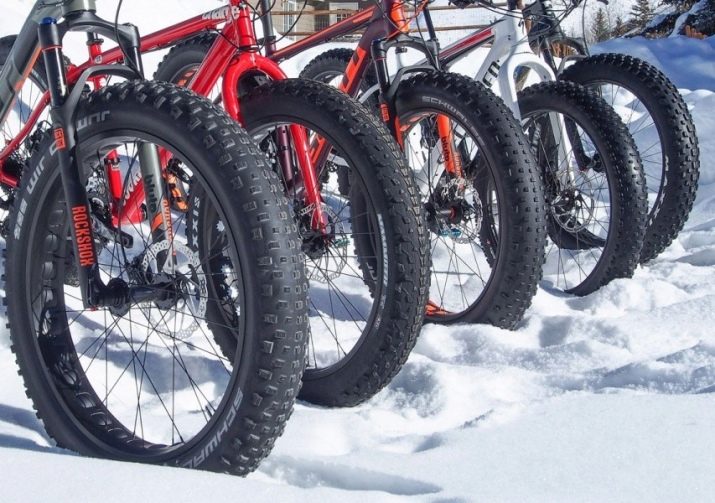
What are they?
Like any other bicycle rubber, winter bicycle tires are divided according to their size. Depending on the bike, the most common are:
- 20 inches
- 26 inches;
- 28 inches (or 27.5 in the mountains);
- 29 inches
Rubber in the first two versions belongs to the category of bicycle tires for special - trial, extreme models with a reduced wheel diameter. The remaining tires are most often mounted on mountain bikes - MTB or fatbikes. Fatbike is also characterized by an increased width of the disks, turning them into a full-fledged SUV for any season. Diameter 28 ″ is typical for high-speed high-speed bikes with narrow tires - it is the most difficult winter ride on them.
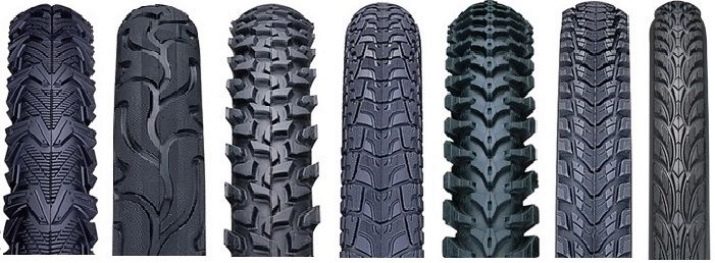
In addition, all winter studded tires are divided into the following types:
- cross slicks - Options for a little frost and well-cleaned streets; the lightest and with minimal studding;
- mud - designed to conquer snowy spaces, they differ in the deepest tread pattern;
- double row tires - they have a rather weak stud, but it is suitable for the city;
- four-row tires for winter - the most protected option that can withstand extreme skiing; 4-row studs make it possible to maintain optimum grip in all riding conditions.

All these categories can be found on store shelves, but it is not enough to determine the look, you also need to choose the right brand.
Manufacturers Overview
Among the manufacturers who have earned the highest praise from lovers and professionals of winter cycling, there are many brands that everyone knows about. They are recommended on online forums, and in stores, they point to the websites of manufacturers of all-season bicycles. Trusting a famous name, you can get much more than just a quality product.. As a rule, in the line of such companies there are several winter tires for any climate and weather.
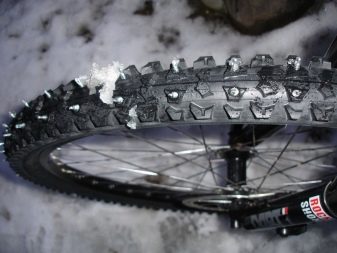
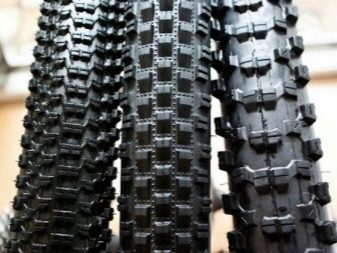
Nokian
For many cyclists, the fact that the Finnish brand Nokian produces not only excellent tires is a big surprise. For bicycles, the company offers tire options based on a non-freezing base. They are characterized by high-quality studding with a large number of hooks, carbide spike tips, a deep and clear tread pattern. The Nokian product line has tires for various operating conditions. Among the most popular winter models, you can pay attention to several options (the index number in the name indicates the number of spikes).
- Hakkapeliitta W 240. Tires suitable for winter weather. The average number of spikes makes them a good option for moving around a variety of types of winter coatings.
- Hakkapeliitta W 106. Universal tires for skiing in the city and beyond. A two-row model with a diameter of 26 ″ has a weight of less than 1 kg per tire. Steel studding, rubber confidently creates a good grip.
- Freddies Reven's 336 SW. This tire model is distinguished by a pattern with an increased width of the distance between the tread elements. In addition, carbide stud tips are used here, and the tire itself is rubber, with reinforcing carbon fibers. All-weather, tenacious and reliable tire for tireless travelers.
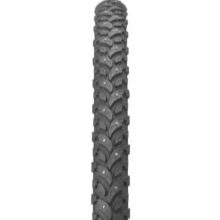
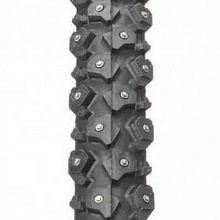
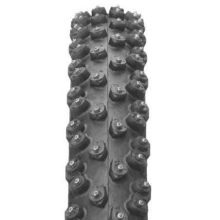
Kenda
Budget tires of this brand are highly valued in Europe. Studded winter tires are designed for use in cold climates, the average cost of a set of tires does not exceed 50 USD. By weight, each tire will add about 1.3 kg to the wheels, which is worth considering when installing them on light bikes. A distinctive feature of the brand is the presence of tread elements that prevent snow from sticking. Among the presented winter models of Kenda tires are the following:
- double row Klondike Standard;
- four row Klondike Wide;
- equipped, grooveddeeply cut by the tread of Klondike Skinny.
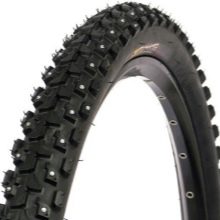

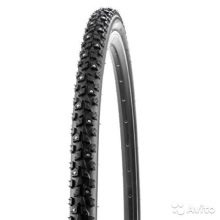
Schwalbe
One of the most famous manufacturers of winter bicycle tires. The company specializes in the premium segment - a set of tires will cost 100-200 USD. Its products are unlikely to interest the owners of low-cost bicycles, but with a service life of 5 years, such tires will fully pay for themselves. Among the popular models, there are several.
- Ice Spiker Pro. The oldest model in the winter line is with a four-shot stud and special carbon tips against slippage. 361 spikes are installed in the rubber, providing reliable traction even on ice. In this case, the tire weight is minimal - not more than 700 g of added load on the wheel.
- Ice Spiker. A model of winter tires with puncture resistant material and other external damage. The design is very durable, the spikes are arranged in 4 rows - their total number is 304. The entire tire weighs about 1 kg and is designed so that the user feels confident when moving on ice and on a snowy track.
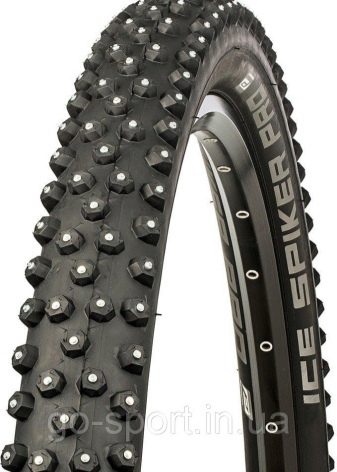
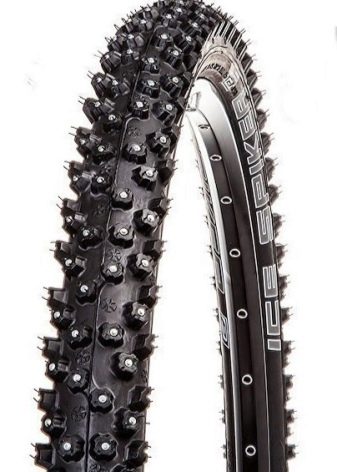
Continental
The German brand produces not only high-quality automobile tires, but also copes well with the tasks of creating bicycle tires. It is worth noting that this particular product was included in the first line of products manufactured by the brand since 1871. True, then the tires were cast. Continental's modern winter bicycle tires are available in 2 main ranges.
- Nordic Spike. These are cross tires in two-row or four-row studs. They are available in size 28 ″ with a width of 1.6 ″. The number of studs 120 or 240 depends on the number of rows, the weight of the tire is 850–900 g, the cost is above the market average. The tires have a deep and clearly cut tread, which allows you to confidently keep the road on ice and in the snow.
- Spike Claw. Off-road tire for wheel size 26 ″, designed for a width of 2.1 ″. This is a reliable option for mountain bikes, which is more expensive than budget brands, but worth the money. The number of studs depends on the performance of the tire: in a double-row they are 120, in a four-row - 240, the total mass of the product - 840 or 900 g.
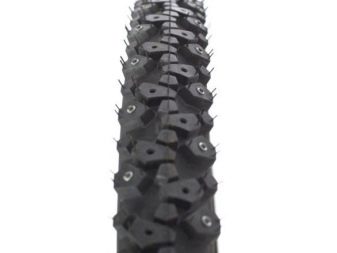
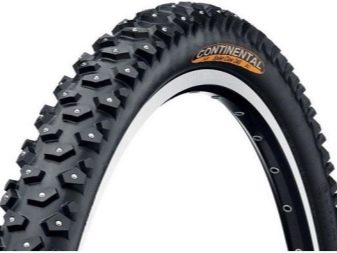
How to choose?
The rules for choosing a bicycle tire for winter start with determining where, how and how much they will be used. For example, if you plan a little off-season trips and on the first snow, it will be enough to install the studded wheel only back. So the bike will gain sufficient stability, but it will keep rolling and maneuverable, and the load on the legs will be less.
If you plan to ride all winter, you must always put both studded tires, otherwise the loss of control on the ice can result in very serious consequences.
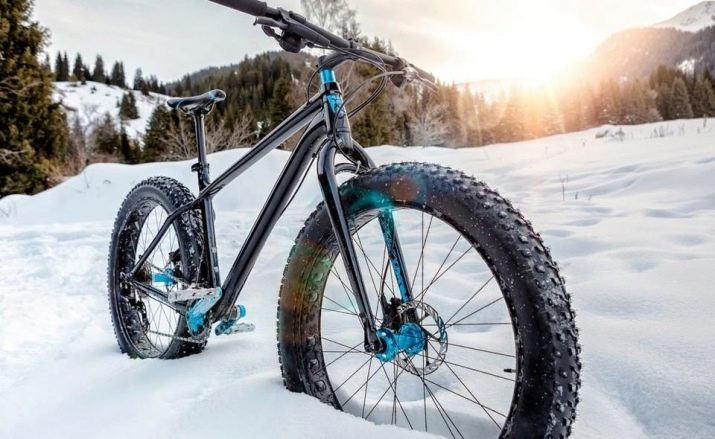
When choosing a tire for winter cycling, you should rely on several parameters and criteria.
- The choice of places for skiing. If it will be bike paths and sidewalks, it is better to choose winter half-slicks for cross-country - easier and more comfortable to use. For forest and off-road, heavy tires with the deepest tread are suitable.
- Temperature condition. If the average winter temperature drops below -15 degrees, it is worth choosing tires marked W made of compound. Rubber in the cold stiffens, behaves unpredictably.
- Depth of snow. On loose surfaces it is better to use narrow tires that quickly cut through the surface to a solid and stable base. On knurled surfaces, it is recommended to use wider tires with an increased contact patch. They are suitable for moving along winter roads, trodden paths and crusts, will help get out of the mud and snow porridge.
- Projector Design Off-road driving requires tires with high lugs, which occupy a smaller area when compared with furrows. Positive tread, where these figures are almost equal, is suitable only for a rolled highway.


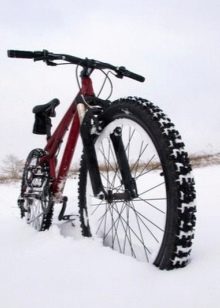
These recommendations will help you evaluate how realistic the idea of winter skiing will be. They will save a novice rider from mistakes in choosing suitable tires.
On how to choose winter tires, see the video.
